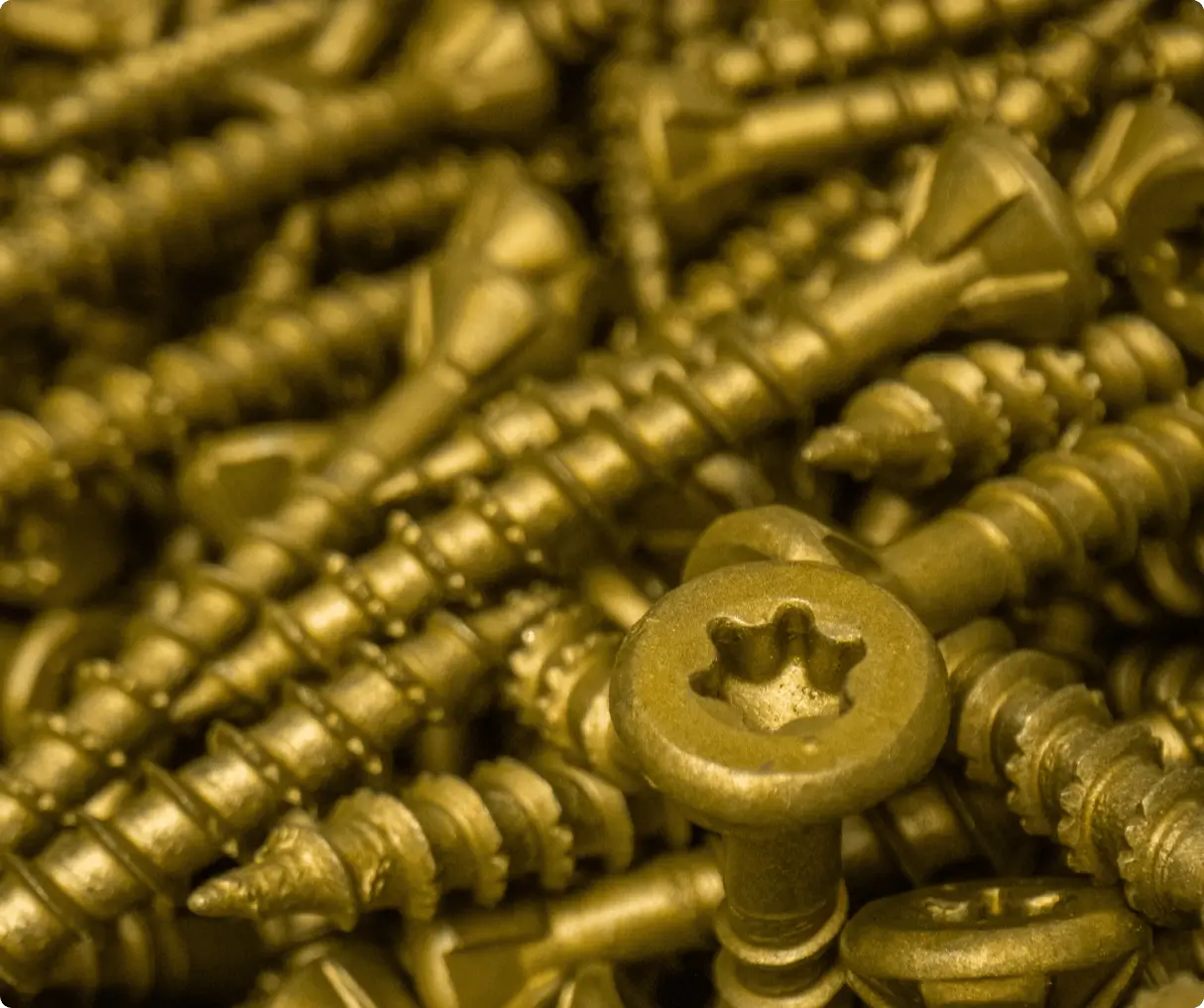Screw Features

Screw Features
It’s easy to overlook the complexity of screws. These ever-present fasteners seem simple, but they include several unique parts that make them the right (or wrong) tool for your job.
The three basic parts of a screw are the head, threaded shank, and point. There are different types of each, so it’s important to know what works best for your particular job. Read on to learn how to make the right choice for your work.
Heads up
There are two basic types of screws: countersinking and non-countersinking. The difference is where the head sits once the screw has been driven. Countersinking screws are designed so the top of the screw head sits flush with or below the material being fastened, such as drywall or decking.
The heads of non-countersinking screws, on the other hand, rest above the material. These are most used in metal fastening projects. The head of each screw features a drive style, such as slotted, Phillips, square, or star. These terms describe the shape of the recessed area in the top of each screw head. When choosing a drive style, consider the speed with which you’ll insert the screw, torque requirements and overall size.
- Phillips is typically used in screws smaller in length and diameter. Common applications include drywall builds and other high-speed, low-torque applications but, this can often increase the chance of cam-out.
- Square, or Robertson, is an older drive style and popular in Canada, is used for high-torque applications like furniture building or small framing projects.
- Star drives combines the best of multiple drive styles. Designed for heavier applications, it increases the points of contact between the screw and the bit for driving the screw, and that in turn boosts the torque transmission capability.
From head to thread
The threaded shank is the heart of the screw. Three measurements determine the size of each screw, and you should consider all three before starting a job:
- Shank diameter: This is represented by the diameter of the thread – the higher the number, the larger the diameter. The size of the shank will help you determine which screw has the ideal strength for your specific job.
- Threads per inch: Often abbreviated as TPI, this is simply the number of threads found in an inch of screw length. Low TPI numbers like seven or eight represent coarse screws for wood, and high numbers like 18 or 22 represent fine thread screws for metal fastening.
- Length: A screw’s length is measured differently depending on whether it is a countersinking or non-countersinking screw. Countersinking screws are measured from the top of the head to the tip of the point. By contrast, non-countersinking screws are measured from just under the head, which rests above the material being fastened, to the top of the point. By measuring the non-countersinking screws this way, the length indicates how far the screw enters the material.
These sets of measurements – shank diameter, threads per inch and length – determine a screw’s designation for sale. For example, a Power Pro screw listed as #10-16 x ¾” means a screw with a #10 diameter shank that has 16 threads per inch and ¾” in length. Coarse thread screws, such as wood screws, typically leave out the threads per inch. On those, you’ll see measurements like #6 x 1¼” instead.
Coarse threads are more resistant to stripping and cross threading because they have greater flank engagement. Coarse threads install much faster as they require fewer turns per unit length. Finer threads are stronger as they have a larger stress area for the same diameter thread. Fine threads are less likely to vibrate loose as they have a smaller helix angle and allow finer adjustment. Finer threads develop greater preload with less tightening torque.
Power Pro’s patented Bore-Fast Serrated Thread design allows screw point to start fast and drive easily without pre-drilling.
to the point
While there are many types of screw points from which to choose, the two most common are self-piercing and self-drilling. Self-piercing points, such as sharp points, are designed to cut through the material as the screw threads. Self-drilling points, or drill points, have a drilling feature at the tip of the screw that is used to bore a hole through the metal before the threads engage to fasten the pieces together.
The Power Pro ONE Multi–Material screws employ a three-sided pyramid point so there is no need for pre-drilling in wood, drywall, plastic, and metal. Drives fast in wood with no splitting. The tip acts like a drill point in metal up to 20 gauge thick. Pre-drilling is required for concrete and masonry applications.
Power Pro manufactures screws to handle any job you’re tackling and choosing the proper ones will ensure your project lasts for years and years.